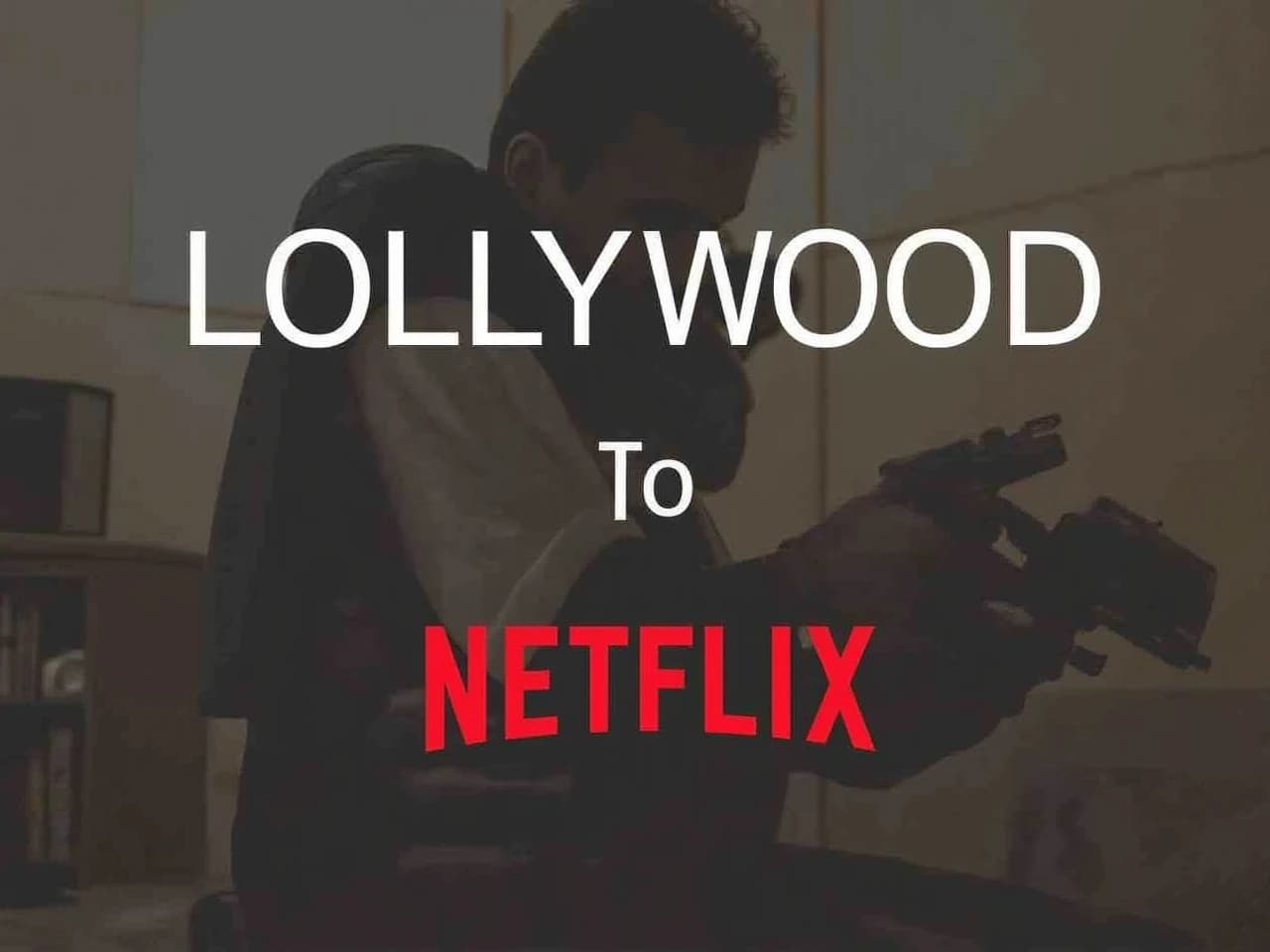© 2025 Roz UpdatesbyTETRA SEVEN

* All product/brand names, logos, and trademarks are property of their respective owners.
Cinema has always been more than just a form of entertainment in Pakistan. It’s a mirror reflecting societal norms, a voice echoing cultural pride, and at times, a vessel for resistance and change. From the bustling halls of Lahore’s iconic Regal Cinema to the comfort of living rooms streaming the latest Pakistani original on Netflix, the transformation of the country’s film industry has been nothing short of revolutionary.
Pakistan’s film industry—once lovingly called Lollywood—witnessed an era of glorious creativity, bold storytelling, and stardom that lit up the subcontinent. But it also endured decades of decline, censorship, and competition that nearly wiped it from memory. However, just when the silver screen seemed to fade into obscurity, a new digital dawn emerged. Streaming platforms like Netflix offered Pakistani filmmakers a global stage, reigniting a flame that had long been dimmed.
Today, the cinematic identity of Pakistan is being reshaped by global access, diverse content, and a tech-savvy audience. This journey—from grainy reels and melodramatic dialogues to high-definition streaming and Oscar-nominated documentaries—is not just about movies. It’s a reflection of a nation’s struggle, resilience, and evolving narrative.
As we dive deeper into the journey of Pakistani cinema from Lollywood to Netflix, we will uncover its glorious past, turbulent middle, and promising future. This transformation not only showcases how technology can disrupt and revive, but also highlights the enduring power of storytelling—no matter the medium.
When Pakistan emerged as a sovereign nation in 1947, its fledgling film industry became an unexpected yet vital tool for nation-building. Karachi and Lahore quickly transformed into production hubs, with Lahore—later dubbed Lollywood—at the heart of it all. Early films like Teri Yaad (1948), the first Urdu feature film post-independence, were more than cinematic experiments; they were statements of cultural intent, reflecting identity, unity, and resilience.
These early years laid the groundwork for a burgeoning industry that would soon captivate millions. State support, audience enthusiasm, and the creative energy of post-colonial freedom converged to spark what many refer to as the first golden age of Pakistani cinema.
The 1960s and 70s were the golden decades of Lollywood. Pakistani films flourished in both quality and quantity, producing critically acclaimed and commercially successful films like Armaan (1966), Heer Ranjha (1970), and Aina (1977). These classics weren’t just cinematic successes—they became cultural milestones. They introduced themes of romance, folklore, patriotism, and social justice in deeply resonant ways.
This era also introduced audiences to some of Pakistan’s most iconic actors and actresses: Waheed Murad, Zeba, Mohammad Ali, Nadeem Baig, and Shabnam became household names. Their performances weren’t just admired—they were emulated, remembered, and immortalized.
Despite its earlier success, the 1980s marked the beginning of a slow descent. A mix of political instability and censorship under military regimes led to tighter content control and creative suffocation. Simultaneously, Bollywood films—although unofficially banned—flooded the market through pirated VHS tapes, severely denting Lollywood’s market share.
The rise of Punjabi-language action flicks replaced the refined storytelling of Urdu cinema, alienating urban audiences. By the 1990s, cinema halls began to close, and Lollywood had largely become a shadow of its former self.
As Lollywood grappled with an identity crisis in the 1990s and early 2000s, a new wave of visionary filmmakers began laying the groundwork for change. Independent directors like Shoaib Mansoor and Sarmad Khoosat emerged as catalysts, bringing fresh narratives, technical sophistication, and a renewed purpose to Pakistani cinema.
Shoaib Mansoor’s Khuda Kay Liye (2007) was a turning point. Not only did it break box office records, but it also tackled controversial subjects like religious extremism and women’s rights—issues often avoided in mainstream storytelling. This bold approach struck a chord with both domestic and international audiences and proved that Pakistani films could compete on merit and message.
These early revivalists inspired a new generation of actors, screenwriters, and producers. The result was a string of hits in the early 2010s, including Bol, Waar, and Zinda Bhaag, which reinvigorated interest in local cinema.
The transition phase was heavily shaped by Pakistan’s geopolitical realities. Issues like terrorism, border tensions, and a fragile economy affected film production and distribution. However, technology became a surprising ally. The shift from analog to digital filmmaking made production more accessible and affordable.
High-definition cameras, digital editing suites, and mobile app-based content distribution helped level the playing field. Suddenly, storytellers didn’t need mega studios to make their voices heard. This democratization of filmmaking helped unearth hidden talent and experimental cinema.
The decline of single-screen cinemas gave rise to modern multiplexes in urban centers like Lahore, Karachi, and Islamabad. These venues offered better viewing experiences and higher revenue potential, making them attractive platforms for new releases. Additionally, the support of private media houses such as Geo Films and ARY Films played a critical role in marketing and distributing local content.
Simultaneously, international film festivals became valuable platforms for Pakistani storytellers. Films like Dukhtar (2014) and Cake (2018) were screened at global festivals, earning accolades and proving that Pakistani stories had universal appeal. These successes built momentum, setting the stage for digital distribution and global exposure.
The global proliferation of streaming services radically altered content consumption—and Pakistan was no exception. For a film industry long constrained by domestic politics, funding issues, and limited distribution, platforms like Netflix, Amazon Prime, and YouTube offered an unprecedented opportunity: borderless access.
Suddenly, independent Pakistani filmmakers could reach not just Karachi and Lahore—but London, Toronto, and Dubai. Netflix began acquiring Pakistani titles like Cake (2018), Motorcycle Girl, and Laal Kabootar, giving local cinema a global passport. These platforms not only increased visibility but also offered vital revenue and recognition that theatrical releases often failed to deliver.
Moreover, YouTube emerged as a fertile space for short films, web series, and student projects. Creators like Irfan Junejo and the team behind Karachi Vynz gained millions of views, proving that digital content was not only viable—it was thriving.
A landmark moment came with Netflix’s announcement of Jo Bachay Hain Sang Samait Lo, its first fully-fledged Pakistani original series. Featuring stars like Mahira Khan and Fawad Khan, it marked a pivotal shift in how international platforms viewed Pakistani storytelling—not just as licensed content, but as investable IP.
Cross-border collaborations also saw an uptick. Joint ventures between Pakistani producers and global studios began exploring bilingual content, subtitled releases, and diasporic themes. Animated films like Sitara: Let Girls Dream not only garnered global praise but also aligned with international advocacy campaigns on education and gender rights.
These projects signaled that Pakistani narratives, when produced with quality and purpose, could resonate across geographies and demographics.
Streaming platforms didn’t just affect where audiences watched—they changed what they watched. Viewers now demanded stronger narratives, better production values, and globally relevant themes. This shift has forced traditional filmmakers to innovate or risk becoming obsolete.
Younger audiences, particularly Gen Z and Millennials, prefer binge-worthy content that reflects contemporary realities—identity, migration, mental health, and social justice. This demand is pushing content creators to elevate standards across scripting, acting, and post-production.
For the industry, streaming has offered a lifeline. It has reduced dependency on box office earnings, introduced analytics-driven content strategies, and enabled global networking. Pakistani cinema, once confined to a niche, now has the tools and platforms to thrive globally.
The journey of Pakistani cinema—from the vibrant stages of Lollywood to the digital domains of Netflix—tells a powerful story of resilience, reinvention, and relevance. What began as a fledgling industry attempting to craft a cultural identity in post-colonial South Asia has evolved into a force capable of global storytelling.
Through decades of glory, decline, and rebirth, Pakistan’s filmmakers have demonstrated an unyielding commitment to the art of cinema. While the golden age gave us legends and memorable tales, the darker years revealed a crucial truth: without adaptation, even the brightest stars fade. Yet, instead of perishing, Pakistani cinema adapted. It broke free from the confines of outdated models and embraced the digital revolution with vigor.
Today, as Pakistani films and series find homes on Netflix, YouTube, and other platforms, the world finally listens—and watches. Our stories are no longer limited by geography or budget; they are judged by creativity, authenticity, and universal appeal. The rise of streaming has democratized the industry, enabling young storytellers, experimental formats, and fresh narratives to flourish.
As we look ahead, the path is ripe with opportunity. With continued investment in quality content, support from global platforms, and a growing audience that values meaningful cinema, Pakistan is poised to not only reclaim its cinematic legacy but also redefine it for a global stage.

8 September 2025
No comments yet. Be the first to comment!